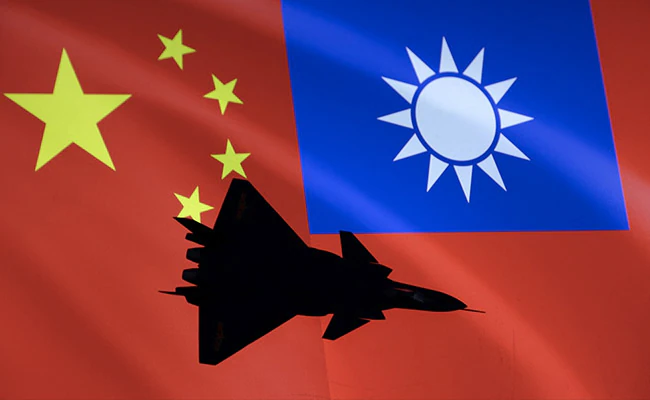1. Abstract
The following paper is aimed at understanding the readiness of India for the Taiwan Conflict in depth along with all the other significant aspects that are connected to it. While doing so, this paper shall delve into the historical causes of the conflict and its repercussions on the global scale, various international players involved, general trends and happenings over the years, etc. The paper will also ponder upon principles and axioms of international peace and security and try to understand the Taiwan conflict in its entirety from the perspective of peace and conflict study of International Relations. The paper aims at carefully examining the nuances of ‘India’s Act East Foreign Policy’ among other foreign policies and put forth policy recommendations in accordance with its national interest and international law which would clarify India’s stance upon the Taiwan conflict. To conclude, the paper envisages a summary of the Taiwan Conflict for the reader and puts forth the modus operandi of the actors concerned with the issue in accordance with the principles of international law.
2. Introduction
The map above indicates PRC and RoC with their weapon systems along with their respective ranges and distances. It also displays the allies of the respective countries. With China being largely shown in red, on the other hand, the US and its allies such as Japan, South Korea, Philippines, Vietnam and Taiwan are shown in gray. The map also shows two strategic bases of the US Air Force Guam and Okinawa Air Bases.
The Taiwan conflict refers to economical, political and social problems that have been happening over the years since 1949 over both the sides of the Taiwan strait. The disputed parties include The People’s Republic of China(Beijing) and The Republic of China(Taipei). The People’s Republic of China (PRC) is becoming more assertive about unifying Taiwan with the mainland. It is a possibility that Chinese actions and incursions could lead to a direct stand-off between China and the United States. The Taiwan question is no ordinary unresolved geopolitical problem. It is of extreme international importance because it involves two stalwarts of international politics namely the USA and China. It is safe to say that the Taiwan conflict is a matter of prestige for both the countries because, for the PRC, the Taiwan question is intolerable and a matter of national humiliation that a part of what it considers its territory still remains “independent” of its control and as for the United States, the PRC’s forcible seizure of Taiwan will strike at the very root of the idea that it is the defender of freedom and democracy across the world.
Geopolitically, there will be significant implications for India’s national security, both directly as well as in the broader regional context, if Taiwan is reunified with the PRC. Conflict or tensions in the Taiwan Strait are, therefore, not in India’s interests. As an important regional player with growing interests across the Indo-Pacific, India cannot avoid playing its part in trying to defuse tension and prevent war. One of the most important reasons why the Taiwan conflict can prove to be a gamechanger for India in international politics is that by tackling the conflict diplomatically and in accordance with its national interest as well as in accordance with the principles of international law related to conflicts, India can establish itself to be a responsible regional power.
India was the second ever country to give recognition to the People’s Republic of China. Chiang Kai-shek of the Kuomintang party of nationalists had visited India in 1953 and had even addressed India through the All India Radio for having a greater impact on Indian masses and to portray the India-China bond as unbreakable. India has also historically adhered to PRC’s ‘One China’ policy over the years and has even mentioned it in its joint press releases . However, a major unfolding was witnessed when India stopped mentioning the use of ‘One China’ policy in its official records from 2010 onwards. This is a major subtle change in the foreign policy of India.
However, Arindam Bagchi, MEA spokesperson when questioned about the air incursion done by China into Taiwan airspace following US House of Representatives speaker Nancy Pelosi, quite diplomatically answered. He commented on the issue by saying ‘It was concerned about the developments happening around the self-governed Taiwan. Unilateral actions that look to change status-quo should be avoided.’ When asked about its stand on ‘One China policy’ MEA spokesperson said “India’s foreign policies are well known and do not require any re-iteration’
US officially acknowledges the ‘One-China policy’ but also on the contrary assists Taiwan in military equipments and training through its Taiwan Relations Act, 1979. With active powers such as the US, South Korea, Russia and Japan involved, maintaining peace and stability in the region can prove to be extremely challenging. Global trade and supply chains could be adversely impacted in times of a full blown conflict as the strategic location of Taiwan is such that it provides access to the Pacific Ocean which leads to the US. Blockages of choke points in water bodies surrounding China and Taiwan can have a drastic impact upon the global economy as transport of essential goods and services will come to a halt.
3. Decoding the Taiwan Conflict
Taiwan is an island located off the coast of mainland China and separated by the Taiwan strait. It is part of a string of islands off the coast of East and Southeast Asia extending from Japan, through the Philippines to Indonesia. Taiwan is bounded to the north and northeast by the East China Sea, with the Ryukyu Islands (the southernmost part of Japan) to the northeast. (see the map below)
Taiwan was a Dutch colony for a brief period from 1624-1661 and from 1664-1668. The Dutch East India Company came with the intention of trading with the Ming Empire in China and the Tokugawa Shogunate of Japan. After Dutch rule, the dynasty which is often credited to be the foundations of modern day China – the Qing dynasty emerged and ruled over China and Taiwan from 1683 to 1895.
Click Here To Download The Paper


📌Analysis of Bills and Acts
📌 Summary of Reports from Government Agencies
📌 Analysis of Election Manifestos

